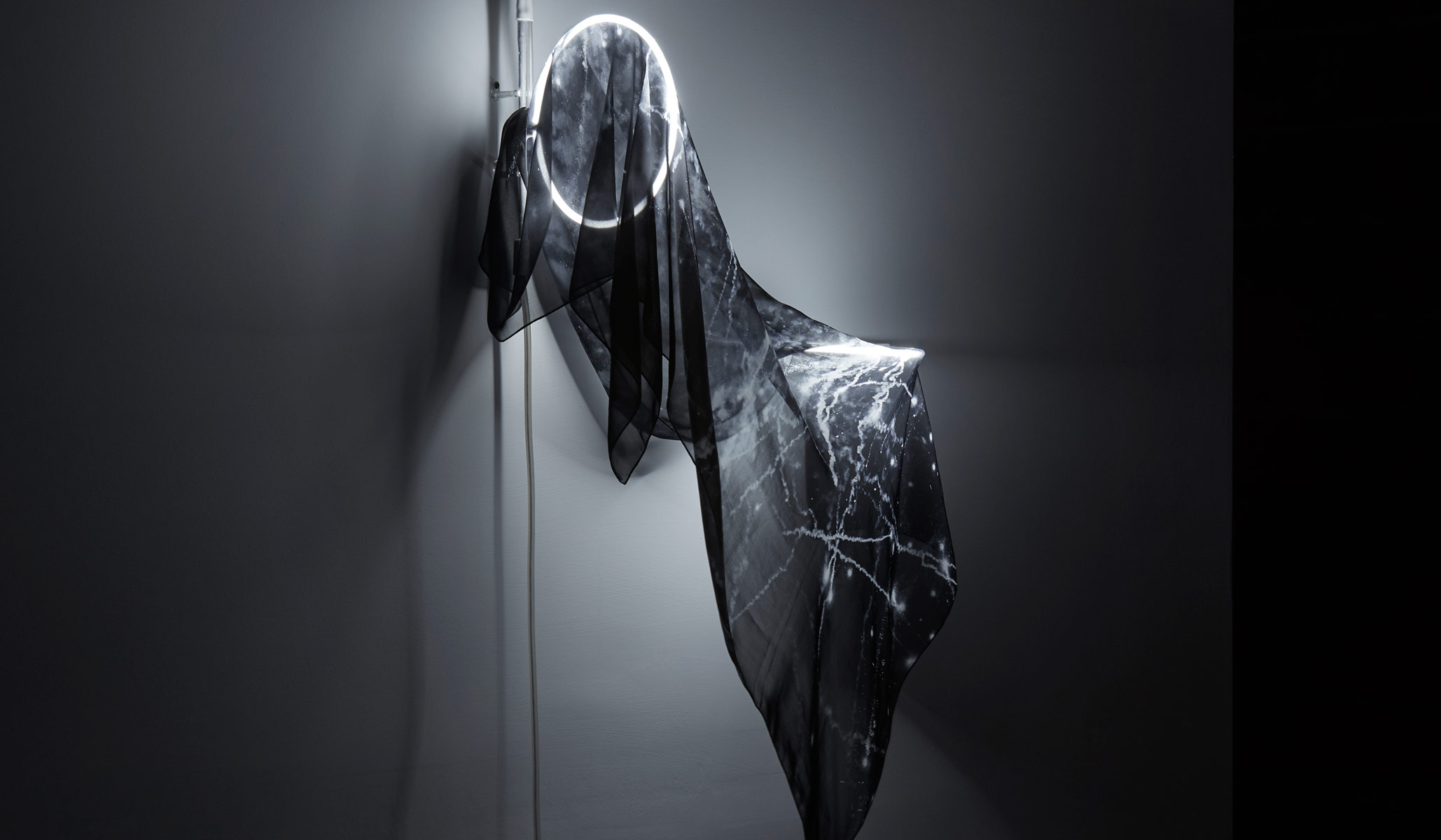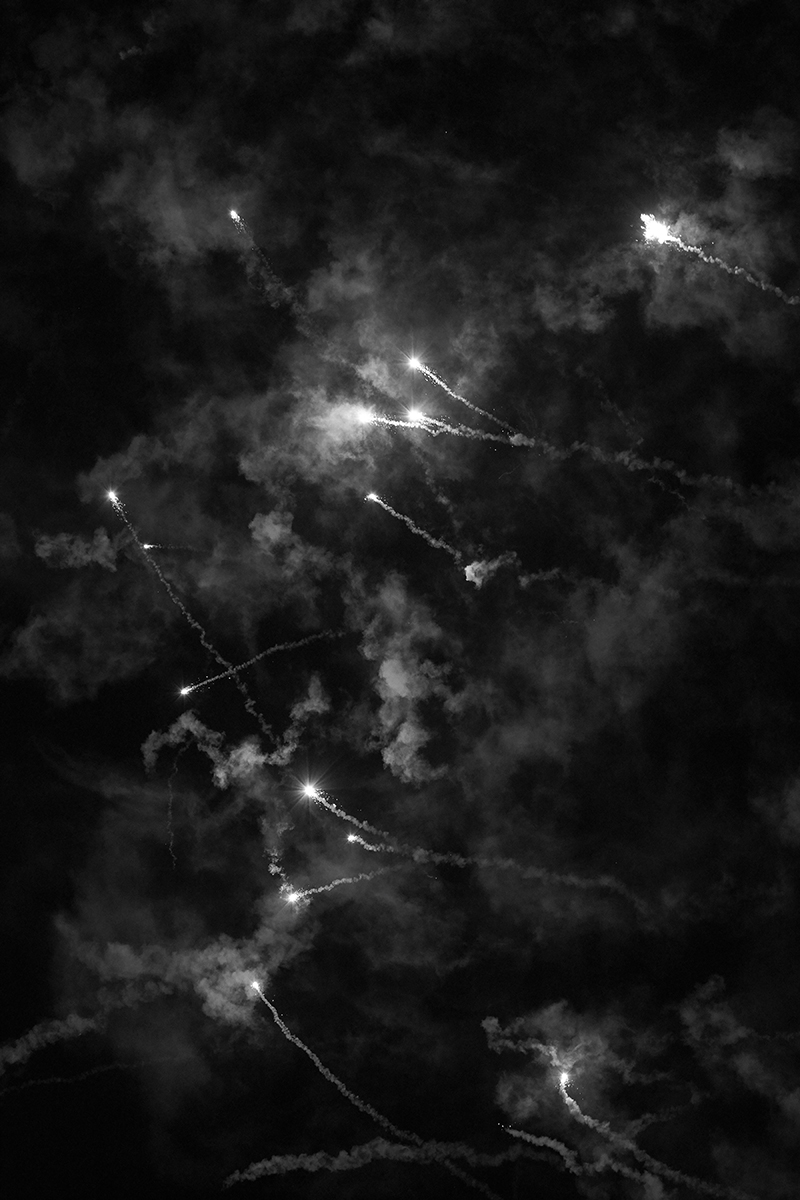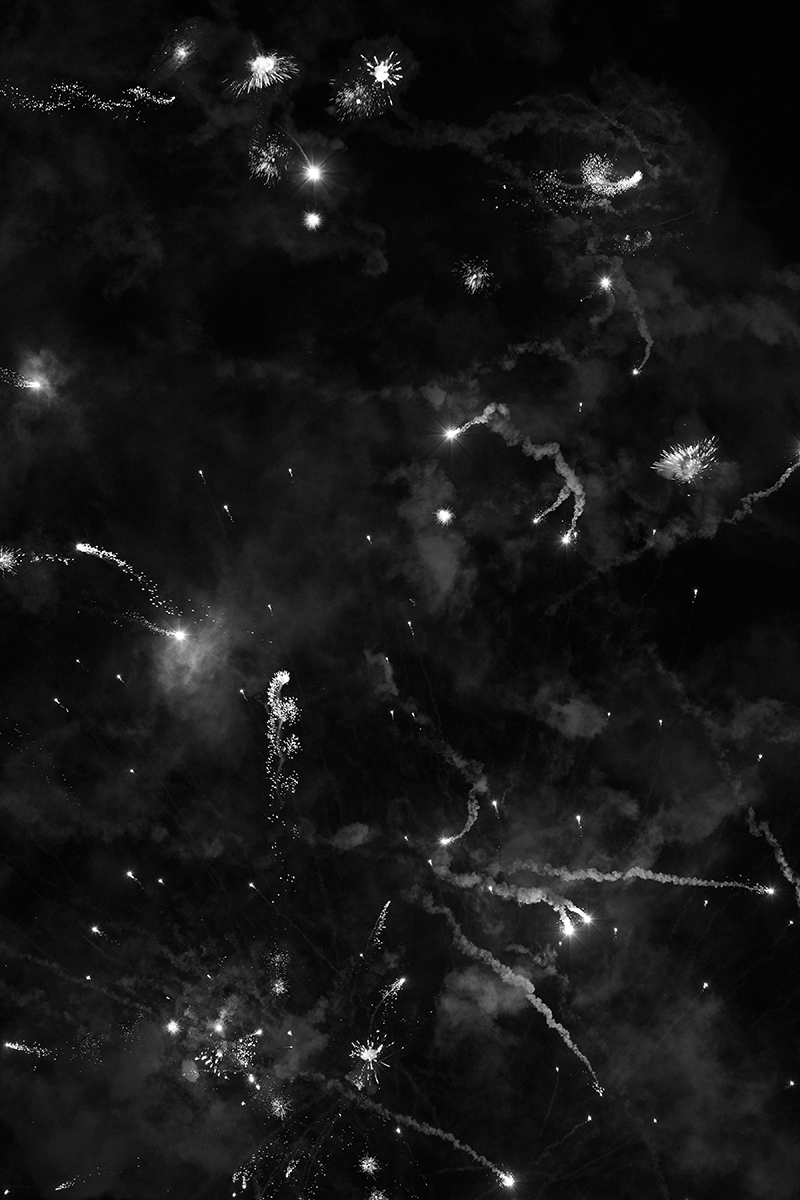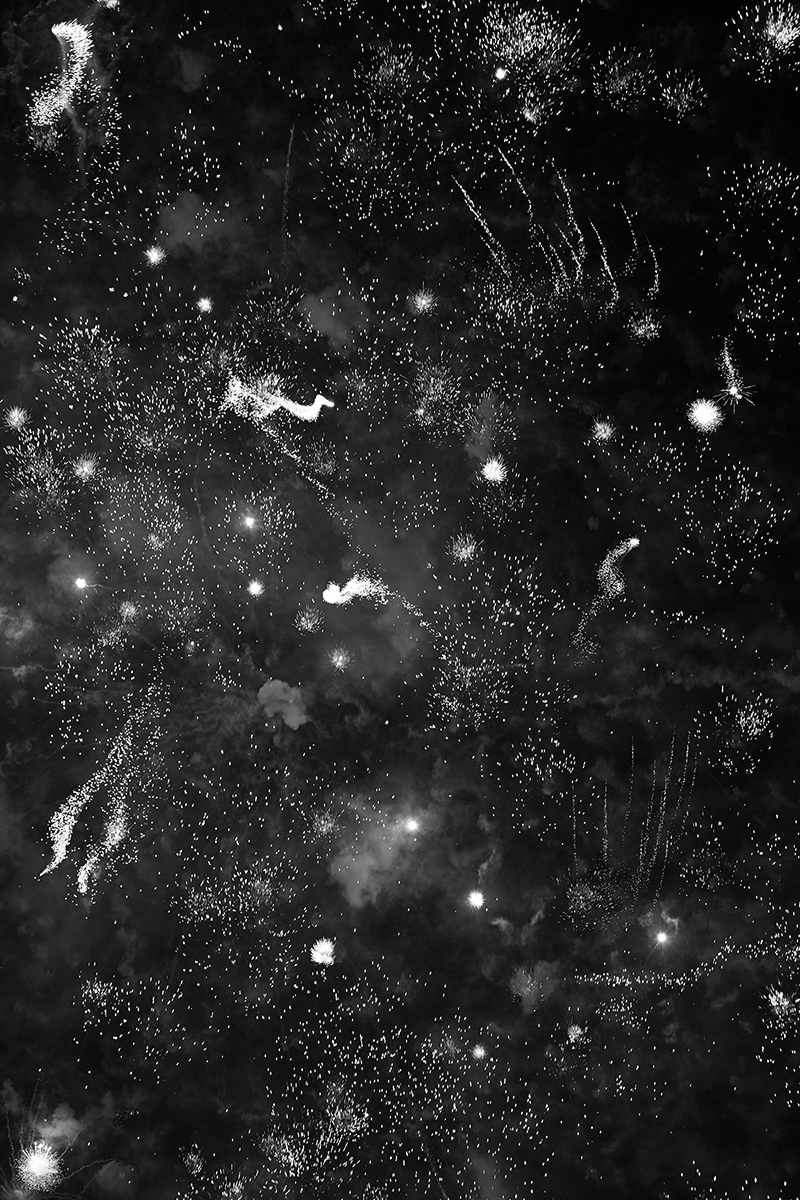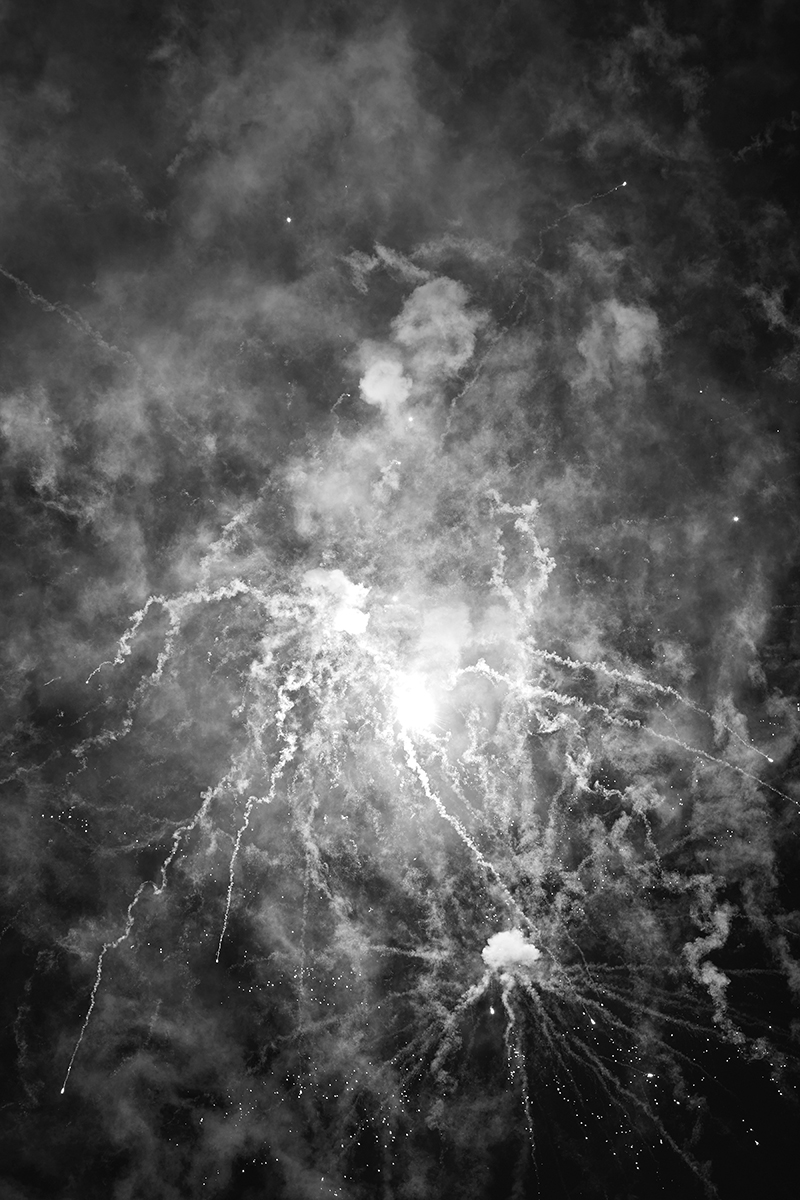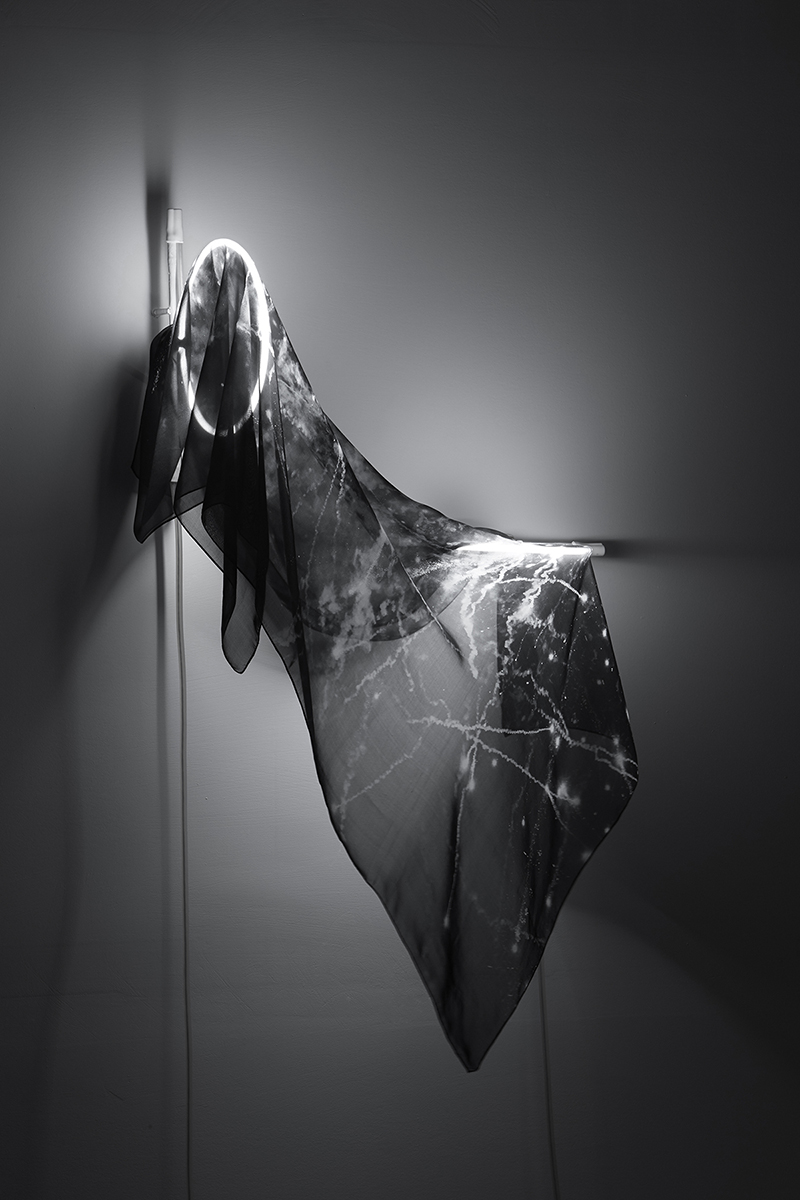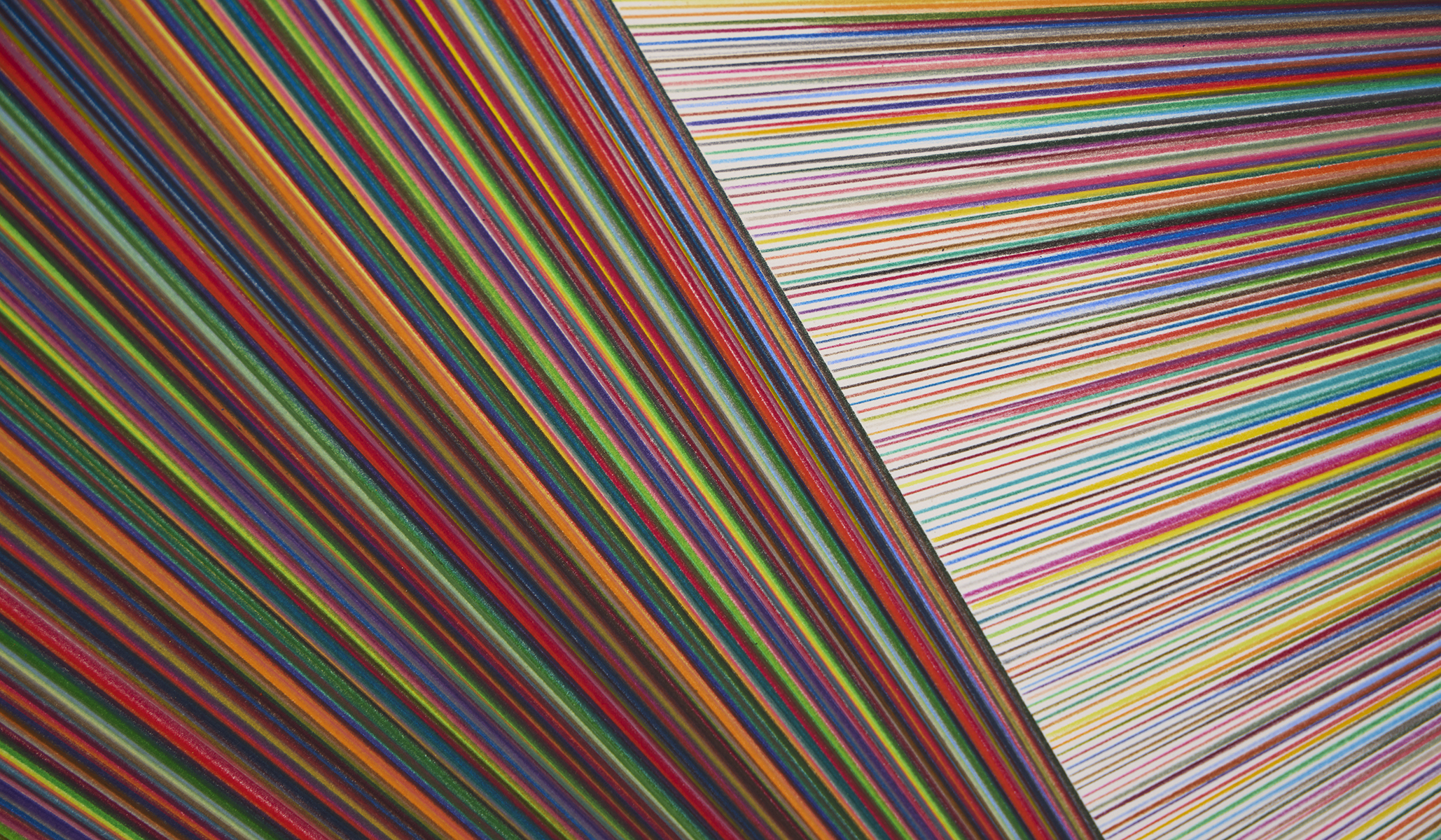Exhibition
Join us on Wednesday 5 September from 6-8pm for the opening of Zan Wimberley’s latest solo exhibition A Profound Gravity.
A Profound Gravity raises questions surrounding the true nature of photography.
This latest body of work by Zan Wimberley is defined by a considered exploration of the intersection between photography – not just as a medium, but also as an idea – and the way in which it can be seen to metaphorically represent our own fleeting mortality. Drawing on her knowledge as a trained scientific photographer, Wimberley breaks down and distils the elements that make up a photograph, to create artworks that transmute her own lived emotional realities into poignant meditations on life, death and the human condition.
The exhibition marries together two sides of photography – the physics (optics, light and mass) with the conceptual – the mortality inherent within photography, best described by Roland Barthes as that which ‘produces death while trying to preserve life’. And so, within Wimberley’s practice, photography goes from being the artistic medium to becoming the subject matter – illuminating the similarities, double meanings and gravitas of life, death and the photographic process.
A starting point for this series were several key ideas expounded in Roland Barthes’ book Camera Lucida, to which the Artist’s thoughts kept returning. Throughout this now seminal text, the idea that photography and death are intrinsically interconnected is inescapable. Written shortly after the death of his mother, whilst still in mourning, Barthe writes touchingly about the idea of the photo-death – the instant that a photograph is taken the moment it captures has in itself already passed – and presents a view of photography as a past tense medium, suggesting that every photograph is a memorial.
Underlying this fascination with photography and death, Barthe was also fascinated with uncovering the true nature of photography in itself…
“…I was overcome by an “ontological” desire: I wanted to learn at all costs what Photography was “in itself”, by what essential feature it was to be distinguished from the community of images…”
Wimberley finds herself falling again and again towards this insistent question, this pressing need to understand on a philosophical level ‘what a photograph is’. It has become a way to build a lens through which she can think not only about photography, but also death. Having lost so many loved ones, the pull to puzzle over figuring out the answer creates a sense of order in the chaos. Wimberley has taken these questions as her starting point when creating these new works. In the Artist’s own words:
.
“A Profound Gravity is a show that is about photography. When people start talking about photography, they immediately start talking about something else. Typically, the photograph acts as a signifier – here’s a photo of XYZ – leading to an ensuing conversation about that particular topic. Instead, my latest body of work aims to get people to think about photography. Photography as a discipline, not as a tool. And so I have chosen to present photographs of fireworks, because fireworks are only energy, light and dark, and the arrangement that they happen to form at any given moment can create a different kind of emotion, which I find endlessly fascinating. So alongside traditional, framed photographs, I’ve made a series of works with the images printed on silk, and hung over neons, really as an invitation to look at photography not just as two dimensional framed works, but also as the light falling on and through materials, the emotions that that can provoke, while still thinking about all of the things contained within a photograph, time, life, death, the passing of a moment, the studium and the punctum.”
Illustrative of these ideas are a series of photographic images of exploding fireworks – fireworks having become something of a repeat motif within Wimberley’s practice over the last few years. Within the context of Wimberley’s images they are a beautiful metaphor of the fleeting nature of life, a metaphor also inherent in the nature of photography. And like photography – the magic of fireworks is conjured by nothing more than simple light and shadow.
At once strikingly beautiful and sublime, the photographs have been conceptualised as an experiment. The photographs are of the same subject matter, taken under the same conditions, with the same exposure, they have been stripped back to black and white, and by removing these variables, it is to possible to look at photography and to understand the effect that light and dark can have on emotion. Some images capture the thrilling sense of wonderment and awe, some emulate how we imagine the start of the universe, others conjure a more poignant sense of loss, for every climactic explosion is fleeting, each image is different and no two people looking at the works will have the same experience.
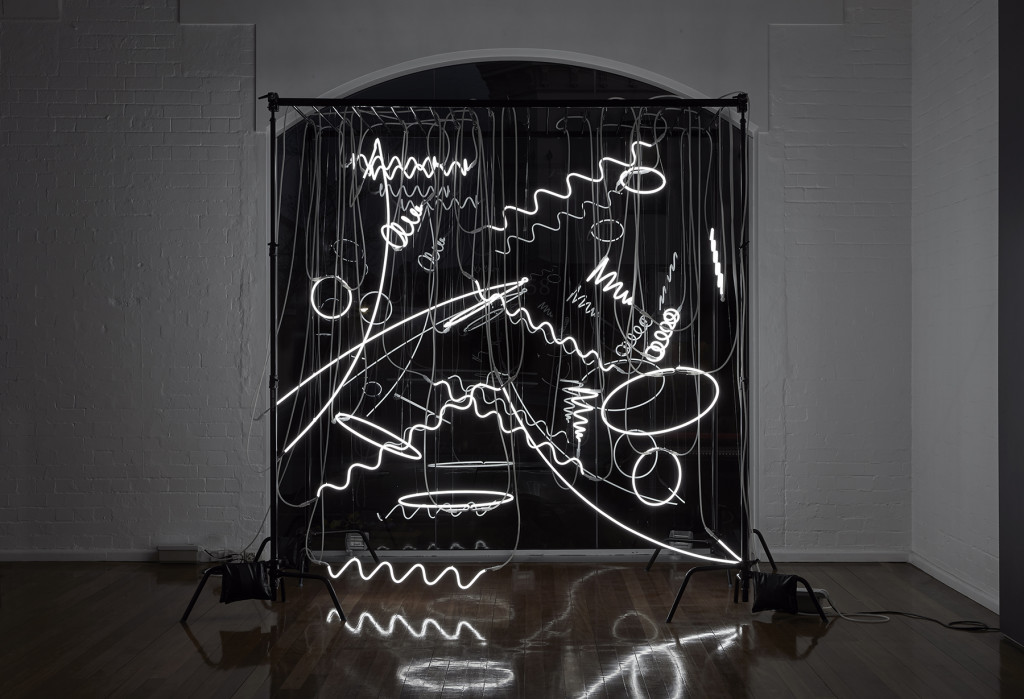
Expanding upon this idea of light and shadow, the artist has turned to the root etymology of the word ‘photograph’ – meaning to ‘draw with light’. Taking this idea quite literally, Wimberley has utilised neon to exploit the way light and shadow can be used to create mood, feeling and emotion. Evoking the chaotic explosions of fireworks, Wimberley’s abstract installation of deconstructed lines and forms appears as a maelstrom of light etched against the shadowy darkness of the gallery space.
Situated alongside this installation are a series of smaller wall-based neon works draped in silk. In these works Wimberley invites us to consider the interplay between light and shadow and to appreciate the way in which the light bends around the folds of the silk and transmits through the tones of the material. If a photograph is a drawing made with light, then might not these neon works be considered photographs? In this sense Wimberley both constructs and deconstructs photographs. Presenting traditional photographic works which immediately fulfil our established understanding of what a photograph is alongside sculptural, neon-based works which challenge us to broaden our definition of what a photograph really can be.
By creating artworks which embrace this expanded notion of photography and which present to us the heavy and almost incomprehensible reality of our own fleeting time on earth and the mortality inherently implied by the photographic process, Wimberley offers a poignant look at the complex interconnectedness of the true nature of photography and the true nature of death.


